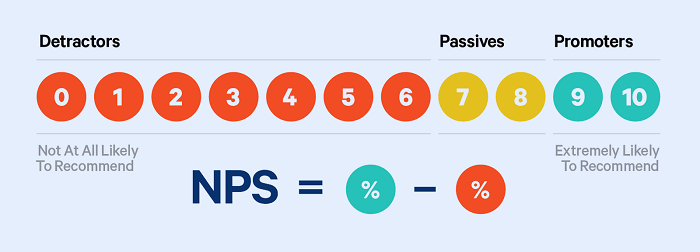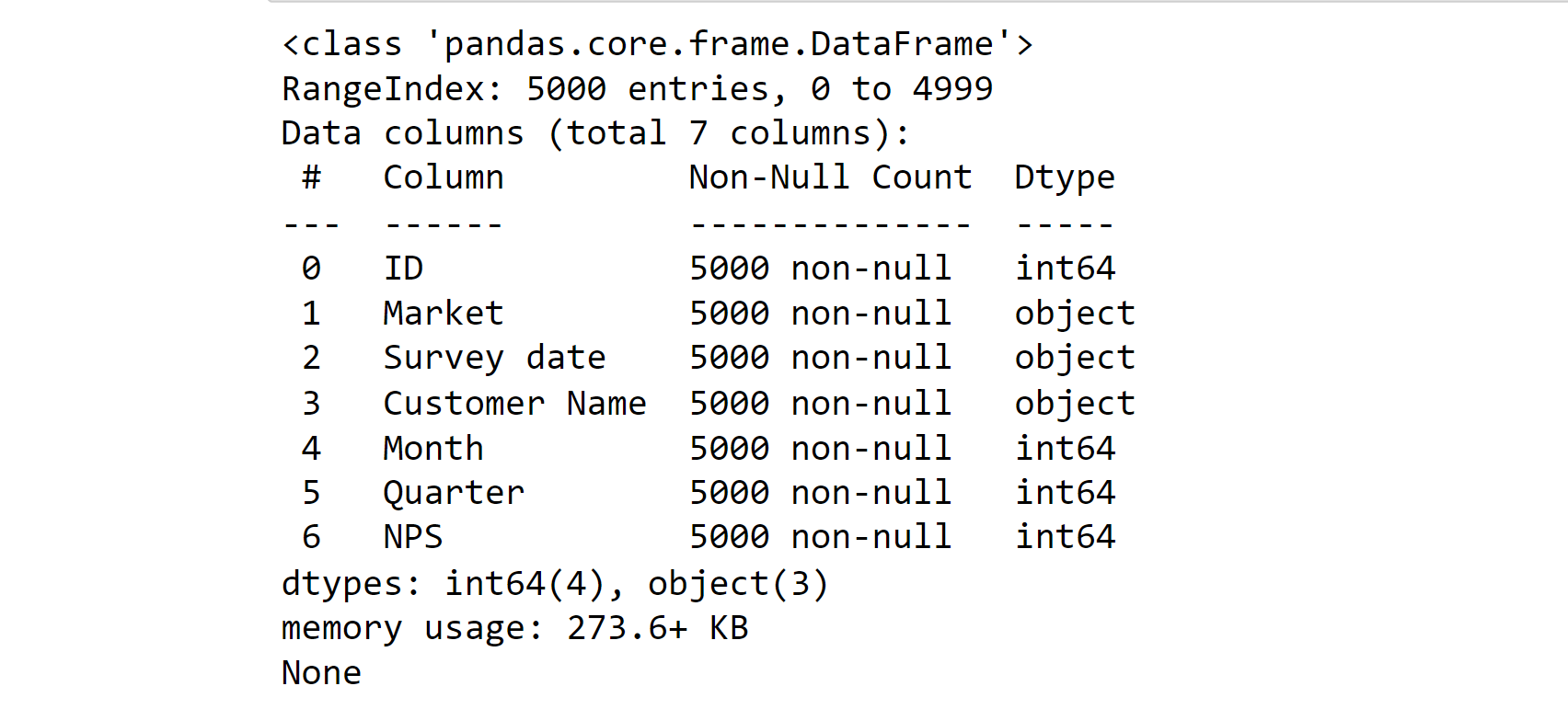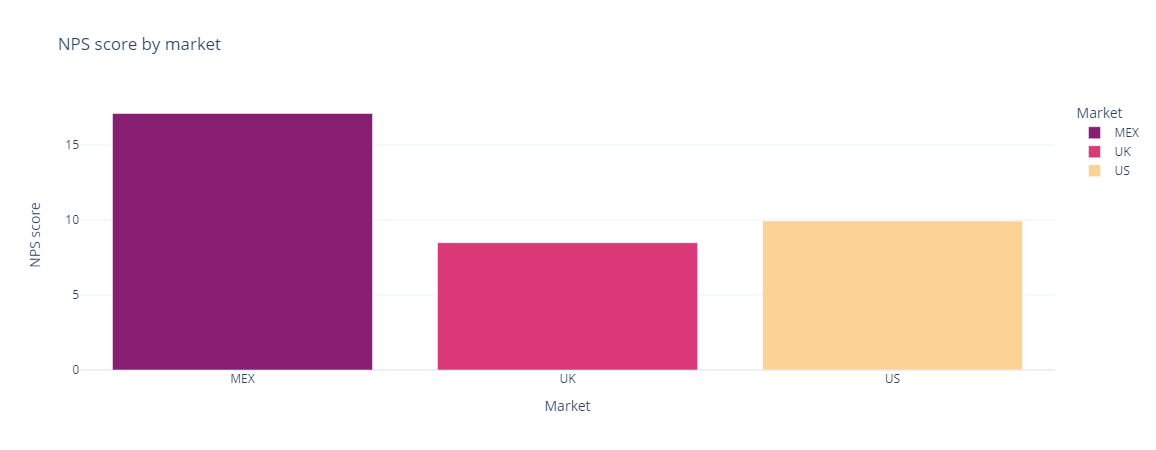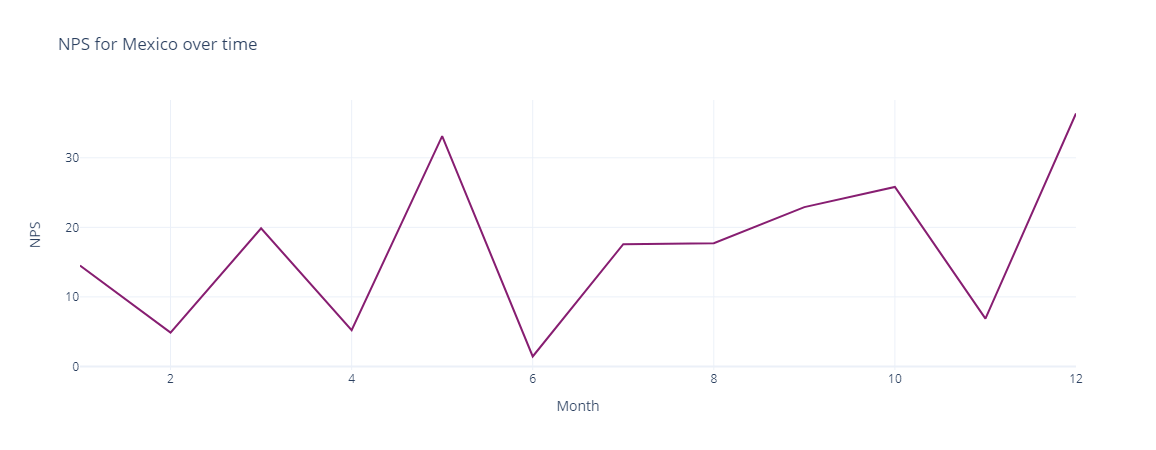NPS in Machine Learning

In the corporate world, the Net Promoter Score (NPS) metric is frequently used to measure customer contentment and happiness. Yet it's not only applicable to the corporate world. Machine learning models' performance in making predictions may also be evaluated using NPS.
Several different industries, including healthcare, finance, marketing, and more, employ machine learning models to anticipate outcomes. It can be difficult to assess these models' efficiency, though. The performance of ML models is frequently assessed using conventional measures like accuracy, precision, and recall. Nevertheless, because they only pay attention to the model's capacity for accurate prediction, these measures do not fully reflect the efficiency of the model.
On a scale of 0 to 10, consumers are asked how likely they are to refer a good or service to a friend or coworker. Customers are then categorized into three groups based on their replies. Which are:
- Detractors (scoring 0-6): Consumers who express dissatisfaction with the good or service and would actively prevent others from utilizing it.
- Passives (scoring 7-8): Consumers who are pleased with the good or service but are doubtful to actively refer it to others.
- Promoters (scoring 9-10): Consumers who are enthusiastic about the good or service and are inclined to tell others about it.
The percentage of detractors is subtracted from the percentage of promoters to arrive at the NPS score. Higher scores indicate better client retention and satisfaction. The final score might vary from -100 to +100.
Application of NPS
Many organizations across the world use the net promoter system. At its simplest, NPS measures customer advocacy; how likely are you to recommend it? Here are some common applications of NPS:
- Customer satisfaction with a product or service may be measured using NPS. This data may be utilized to pinpoint problem areas and create plans for raising customer satisfaction.
- NPS can be used to compare a company's performance against that of its rivals. It can be utilized to pinpoint areas where a company is falling behind its rivals and to create plans to strengthen its standing in the market.
- NPS can be utilized to monitor changes in client loyalty over time. Trends may be found using this NPS data, and methods for boosting client loyalty can be developed using it.
- To pinpoint aspects of the consumer experience that require improvement, NPS can be utilized. With this information, initiatives may indeed be created to improve the customer experience, such as speeding the checkout process or enhancing customer support that can improve the consumer experience.
- NPS could assist firms in identifying consumers who are most inclined to promote(promoter) their goods or services and those who are least likely to do so (detractors). This data may be utilized to create targeted marketing efforts and respond to critics' complaints.
- Employee performance may be assessed using NPS. Customer service agents, for instance, may be judged on how well they can raise NPS ratings.
Applying NPS to Machine Learning Models
Applying NPS to machine learning models involves asking users how likely they are to recommend the model to others. This can be done through surveys or other feedback mechanisms. The responses can then be used to calculate an NPS score for the model.
For illustration, suppose we have created a machine learning model to forecast whether or not a client would churn. We may enquire about the likelihood of referral from a sample of users who have engaged with the model. We can determine the model's NPS score based on their replies.
Customers that are happy with the model and are inclined to suggest it to others have a high NPS score. If the NPS score is low, on the other hand, it means that customers are not happy with the product and are not likely to suggest it to others.
Advantages
Here are some potential advantages of using NPS in machine learning:
- In comparison to more traditional ways, NPS is a more affordable way to measure customer satisfaction. Machine learning algorithms can rapidly and reliably evaluate massive amounts of data, decreasing the need for the conventional way of measuring customer satisfaction.
- NPS may be used to assess how well a company is performing in relation to its rivals. Several firms' NPS data may be analyzed by machine learning algorithms to reveal market trends, consumer preferences, and opportunities for development. To keep ahead of the competition and offer better consumer experiences, this information may be exploited.
- Machine learning algorithms may examine NPS data and provide consumers with customized suggestions based on their comments. This enables companies to provide specialized solutions that address the particular demands of each consumer. It enhances consumer satisfaction and devotion which requires personalization according to their need.
- Real-time feedback is another benefit of utilizing NPS in machine learning. Customer input may be analyzed by machine learning algorithms, which can then deliver insights immediately. This enables companies to move promptly to address customer input and solve problems.
- NPS may be used as a prediction model for customer behavior, which is one of the key advantages of employing it in machine learning. A straightforward inquiry, "How likely are you to suggest this product/service to a friend or colleague?" is the basis of NPS. Customer loyalty and satisfaction are strongly predicted by this query. The chance that a client would make a repeat purchase or return may be predicted using machine learning algorithms and NPS.
Disadvantages
The Net Promoter Score (NPS) has several limits when it comes to machine learning, despite the fact that it may offer insightful information on customer loyalty and happiness. These are a few drawbacks of utilizing NPS in machine learning.
- NPS scores might range significantly across various goods, services, or sectors. This makes comparing NPS scores across many organizations and setting benchmarks against industry norms challenging. It might be challenging to create machine learning models that produce useful insights without a uniform standard.
- NPS scores by themselves do not offer useful information to businesses. Businesses need to understand the reasons for customer ratings and the precise areas of their product or service that need to be improved in order to make educated judgments. Machine learning algorithms might not be able to produce suggestions that are useful without this data.
- NPS scores can be skewed by variables like survey length, scheduling, or the sort of customers being polled. Customers who just had a good experience with a product or service, for instance, would be more inclined to offer a high score, resulting in an excessively favorable NPS result. It may be challenging to create precise machine-learning models because of these biases.
- NPS only assesses consumer satisfaction with respect to a specific item or service. It does not reflect larger consumer attitudes or viewpoints, such as how customers feel about a company's principles or brand. It may be challenging to create machine learning models that take into account larger client wants and preferences due to this narrow scope.
- Customer recommendation likelihood is the sole question in the NPS survey, which is administered to all respondents. The context or justification for why customers are awarded a certain grade is not provided, though. The underlying causes of consumer happiness or discontent may be difficult to comprehend due to this lack of context.
Python Implementation
Now we will try to implement NPS in machine learning.
Customers rate a brand on a scale of 0 to 10, depending on how likely they are to tell their friends and family about it. Consumers who rate between 9 and 10 are categorized as promoters, between 0 and 6 as detractors, and between 7 and 8 as passives. The percentage of detractors is deducted from the percentage of promoters to compute NPS.
Note: This dataset is based on actual customer score distributions from a number of different nations.
Problem Statement: Find the Highest NPS Score by Market and its trend.
Output:

5000 rows make up the data. Every consumer has an ID, their name, the date, and the score they provided. To make aggregating by dates simpler, the month and quarter have already been calculated. To facilitate processing, we shall first identify a customer's promoter, passive, or detractor status.
Now we will create a new column where we allocate the customers into three segments:
- Detractor
- Passive
- Promoter
Output:

Here is the main task, we will find if there is any difference in NPSby Market.
Output:

We can see that there is a high difference between Mexico and the other two markets.
Now we can also look at the changes in NPS for Mexico.
Output:

Now we can easily see the trend of NPS over the period of time.
There are up-down in the trend, but we can see that currently, the NPS is on the rise.
Conclusion
NPS is a potent indicator that may be used to assess how well machine learning systems perform in terms of retaining and satisfying customers. Companies can track increases or decrease in user satisfaction by tracking a system's NPS over time and taking appropriate action to resolve any potential problems. NPS may also be used to evaluate how well various machine learning models or systems perform and to pinpoint system flaws. NPS is going to become a more crucial tool for assessing and enhancing customer happiness and loyalty as machine learning develops and spreads.
|





 For Videos Join Our Youtube Channel: Join Now
For Videos Join Our Youtube Channel: Join Now










